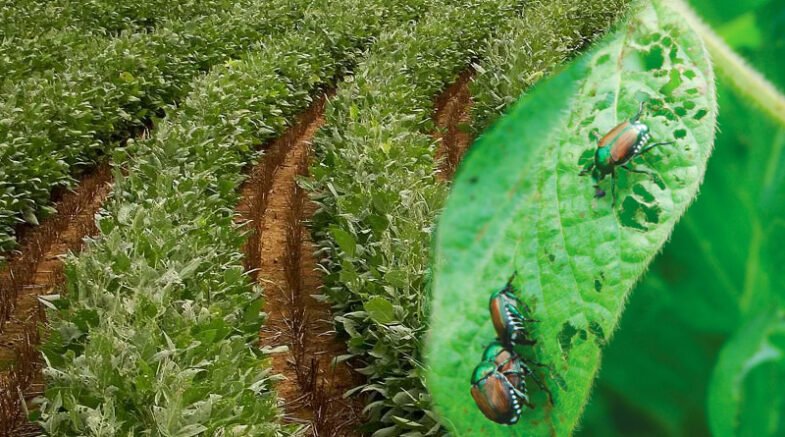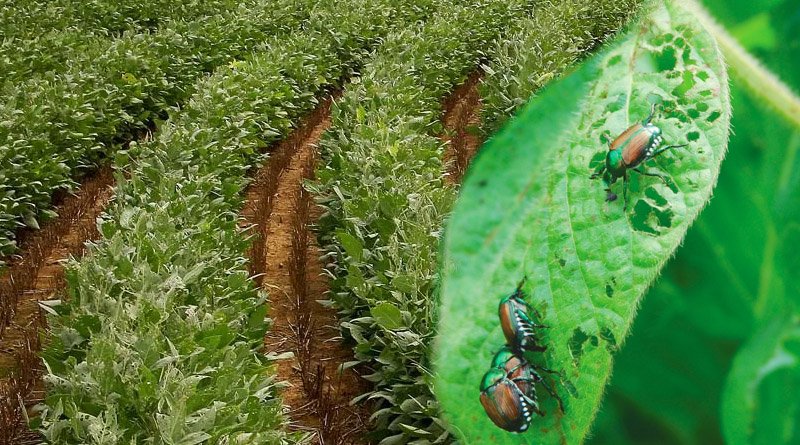Soybeans are one of the most important crops in the world, providing a significant source of protein and oil for both humans and animals.

Soybean is one of the most important crops in the world, providing a significant source of protein and oil for both humans and animals. However, like any crop, soybeans are susceptible to various diseases that can significantly reduce yields and quality. In this article, we will explore some of the most common diseases of soybean and discuss strategies for their management.
Soybean Rust
One of diseases of soybean is soybean rust. It is a fungal disease caused by the pathogen Phakopsora pachyrhizi. It was first identified in Japan in 1902 and has since spread to other soybean-growing regions around the world. The disease is characterized by small, circular, rusty-colored lesions on the leaves, stems, and pods of the soybean plant.
Soybean rust is a significant threat to soybean production as it can cause severe defoliation and reduce yields by up to 80%. Management of soybean rust includes the use of fungicides, resistant varieties, and cultural practices such as crop rotation and timely planting.
Soybean Cyst Nematode
The soybean cyst nematode (SCN) is a microscopic worm that infects the roots of soybean plants. It is one of the most damaging pests of soybean worldwide, causing yield losses of up to 30%.
Symptoms of SCN infestation include stunting, yellowing of leaves, and reduced nodulation. Management of SCN includes the use of resistant varieties, crop rotation, and nematicides. It is essential to rotate crops to non-host plants like corn and wheat, which can break the SCN’s life cycle and reduce populations in the soil.
Brown Stem Rot
Brown stem rot is a fungal disease caused by the pathogen Phialophora gregata. It is prevalent in the Midwest and Eastern United States, causing significant yield losses in soybean fields. Symptoms of brown stem rot include brown discoloration of the stem’s pith, which can extend from the lower stem to the upper nodes of the plant.
Management of brown stem rot includes the use of resistant varieties and cultural practices such as crop rotation and tillage. It is also essential to avoid planting soybeans in fields with a history of the disease.
Phytophthora Root and Stem Rot
Phytophthora root and stem rot are caused by the pathogen Phytophthora sojae. It is prevalent in soybean-growing regions with heavy soil and poor drainage. Symptoms of Phytophthora root and stem rot include wilting, stunting, and yellowing of the plant.
Management of Phytophthora root and stem rot includes the use of resistant varieties and cultural practices such as crop rotation, tillage, and drainage. Fungicides can also be used to control the disease, but their effectiveness can vary depending on the pathogen’s population.
Frogeye Leaf Spot
Frogeye leaf spot is a fungal disease caused by the pathogen Cercospora sojina. It is prevalent in soybean-growing regions with warm, humid weather conditions. Symptoms of frogeye leaf spot include circular lesions with a reddish-brown center and greyish-white margins.
Management of frogeye leaf spot includes the use of resistant varieties and cultural practices such as crop rotation, tillage, and fungicides. It is essential to scout fields regularly and apply fungicides at the first sign of infection.
White Mold
White mold is one of the fungal diseases of soybean caused by the pathogen Sclerotinia sclerotiorum. It is prevalent in soybean-growing regions with cool, moist weather conditions. Symptoms of white mold include white, cottony growth on the stem, leaves, and pods, as well as wilting and stem rot.
